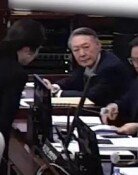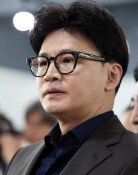60 Korean War Survivors Forcibly Enshrined in Yasukuni
60 Korean War Survivors Forcibly Enshrined in Yasukuni
Posted October. 24, 2007 08:12,
It has been reveled that 60 Korean soldiers and their families, among those forcibly mobilized by Japan during the Second World War, were wrongly listed in the Yasukuni Shrine as war-dead.
The Truth Commission on Forced Mobilization under Japanese Imperialism (Truth Commission) published on October 23, the Report on the enshrinement of Koreans in the Yasukuni, which states that among 21,181 Koreans listed in the Yasukuni Shrine, 13 are still alive and 47 died after the war.
Among the 60, eight were soldiers forcibly drafted and 52 were civilians attached to the military. Ten belonged to the army and the rest to the navy.
This is the first time that the Korean government has officially produced a comprehensive report on the Koreans listed in the Shrine.
The Yasukuni Shrine maintains no deletion policy for names of survivors-
The Truth Commission believes that the enshrinement of the 60 Koreans war survivors stemmed from the fact that the confirmation of death of Koreans excluded from compensation after the war was inadequately handled.
Oh Il-hwan from the Bureau of General Investigation of the Truth Commission said, The Japanese Government made rigorous efforts to verify the Japanese war-dead by giving compensation and transportation fee discount vouchers to their families. Yet the Japanese government had no will to do the same to the Koreans forcibly mobilized by Japanese forces.
According to the report, among the 60, 38 nine of which are alive and 29, bereaved have so far requested the deletion of their own and their family members names from the Shrines list. Yet at their request for the deletion of their names from the list or the withdrawal of their enshrinements, the Yasukuni Shrine has only sent confirmation of their being alive, without granting their request.
The Yasukuni Shrine said that Yeongsaebon, the list of those enshrined, which it considers to be of particular importance, is beyond human reach and thus, it is not possible for corrections to be made.
Mr. Oh said, The Yasukuni Shrine has maintained the principle of making no changes to the list of those currently enshrined. The vague expression of the confirmation of survival, instead of the deletion of names from the list or the withdrawal of their enshrinements, and the talk of Yeongsaebon, indicates that the Yasukuni Shrine has no intention of removing the names of the Koreans who were wrongly added to the list.
The forcible Korean enshrinements only possible as Koreans at that time were not foreigners, the Yasukuni Shrine stated.
In the report, the Truth Commission argued against the Shrines logic, that enshrinements even without the consent of the bereaved are its tradition.
The Shrine claimed, Enshrinement is a tradition from the Meiji period and it has not been the case that the consent of the bereaved is necessary for enshrinement.
Yet the report pointed out that during the Russo-Japanese War in 1904, when the Japanese army transport ship Hitachimaru was sunk by a Russian attack, the Yasukuni Shrine listed the three English war-dead, including the captain, after obtaining the consent of their families.
Mr. Oh said, The Yasukuni Shrine claims that the English were foreigners while Koreans at that time were Japanese, and thus there was no need to gain the permission of their families.
turtle@donga.com



![[단독]김경 “1억원 줄때, 강선우도 함께 있었다” 자수서](https://dimg.donga.com/c/138/175/90/1/wps/NEWS/IMAGE/2026/01/14/133148772.5.jpg)


![반찬통 착색 고민 끝…‘두부용기’ 버리지 말고 이렇게 쓰세요 [알쓸톡]](https://dimg.donga.com/c/138/175/90/1/wps/NEWS/IMAGE/2026/01/09/133126593.3.png)
